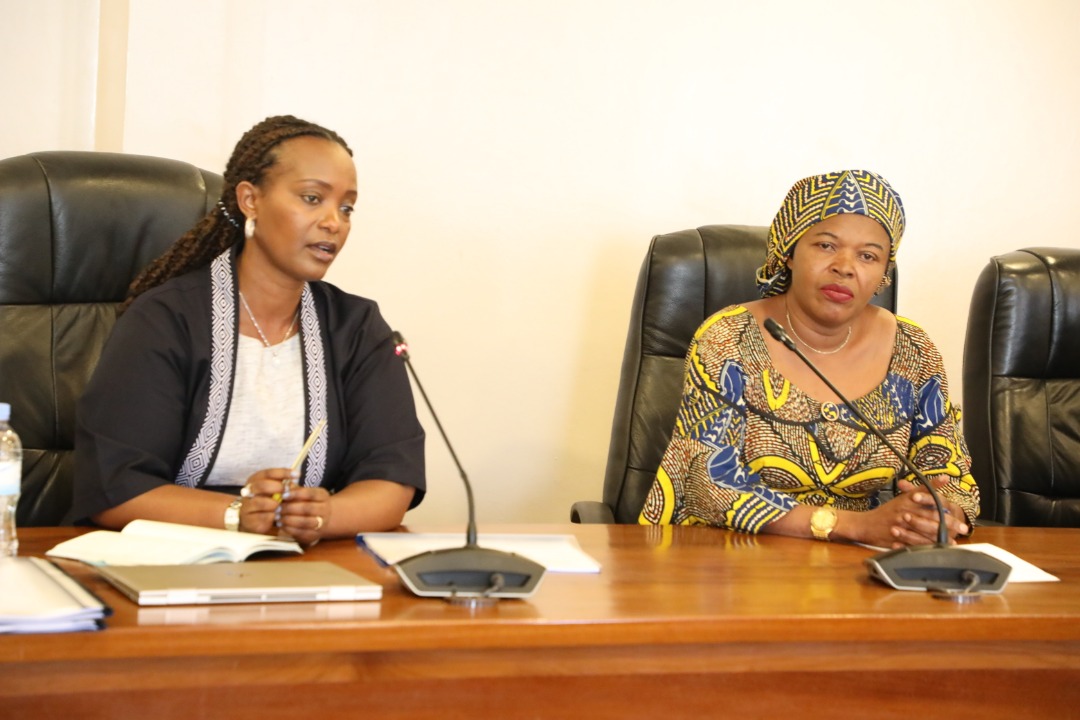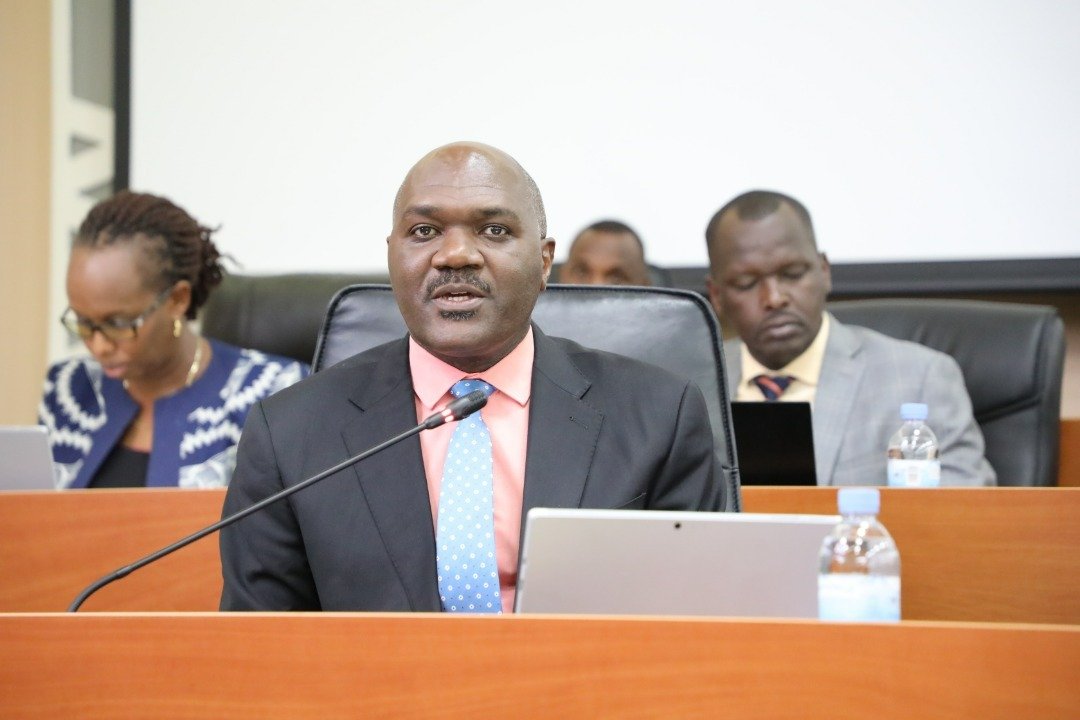
RPP+ Executive Secretary Sage Semafara (L) and RRP+ chairperson Sylvie Muneza presenting the research to parliament
The Rwanda Network of People Living with HIV (RRP+) has unveiled new research that shows a reduction in the stigma index over the last 10 years.
According to the research that was unveiled to the parliament committee, July 22, 2020, stigma index declined to 15 compared to 50 in 2010.
The findings align with UNAIDS goals of reducing stigma around HIV AIDS to zero. Rwanda has seven years to meet the goal following progress in other areas of access to ARVs and treatment.
The new research (quantitative) was conducted in 19 districts and done on 938 persons especially People Living with HIV (PLHIV), members and non-members of RRP+, sex workers, and men who have sex with men (MSM).
RRP+ chairperson Sylvie Muneza, said that she is a living testimony after being infected with HIV/AIDS in 1997 when there was no medication and stigma was everywhere in society.
“Back then, to have HIV could lead to death penalty. I weighed 12Kgs with low viral resistance and wanted to commit suicide because of the stigma,” Muneza said.
She noted that this has changed especially with the availability of free medication and mass mobilization by government and RRP+.
Ending Stigma
Though the overall HIV stigma index in Rwanda was very low, this rate ranking is not homogeneous across the five components that generated the index.
For instance, all respondents classified the HIV stigma related to the interaction with health services as very low, and the experience of stigma in the last twelve months was ranked also as very low by 82% respondents.
The concern about disclosing their HIV status was ranked as very low by 63% while internalized stigma and resilience at 59% was ranked as very low.
However, only 9.4% respondents classified cases of stigma as very low in relation to human rights and effecting change.

Senator Lambert Dushimimana, who presented the committee report
Using this data and findings, the RPP+ Executive Secretary Sage Semafara said that they are concerned about traits of HIV Stigma implemented by force when one seeks loan and insurance services at the bank, marriage in church and at school.
“I am a deacon in my church and we are required to advise couples to take an HIV test before marriage and that should be it. But the information we have is some churches and banks require one to reveal the HIV status,” Semafara, said sending MPs into awe.
Semafara revealed to parliament that this tendency becomes worse in boarding schools where children’s baggage is searched in public and ARVs used by some students living with HIV are exposed, thus deepening stigma among some who end up dropping out of school.
For example, Semafara said one student in the case above, was forced to lie that the ARVs were for stomachache. A couple of days later another student asked for the medication compelling the other to give out medication for the wrong reason.
In another case in school, she revealed that students with HIV hide the medication and swallow it earlier before others wake up, or totally stop using ARVs which Semafara said could be linked to the increasing number of new HIV infections among children below 25 years.
“We know parliament has a voice to reach every ministry. We are asking that the ministry of education comes up with a policy where boarding students are searched in private and place a focal person (teacher) who can handle the special cases,” Semafara said.
HIV prevalence among Rwanda’s general population has been stable at 3% for the last decade. It is higher among women (3.6%) than men (2.2%); more prevalent in urban (4.8%) compared to rural areas (2.5%).
The Parliament social affairs committee took the responsibility of advocating and using legal structures to end HIV stigma, and change the narrative on HIV as any other sickness but also called for more research on underlying factors.

